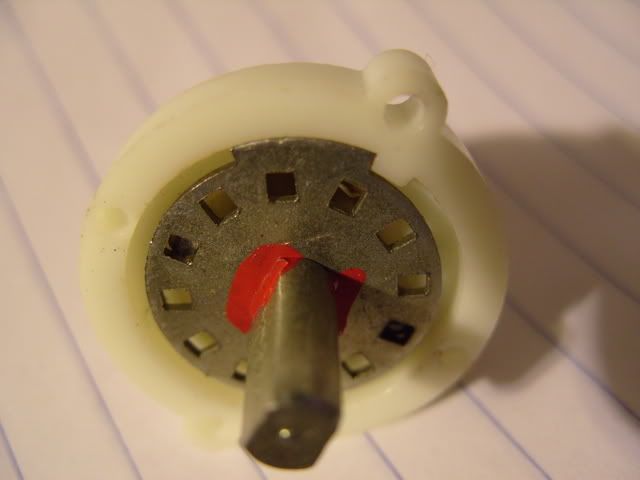Further analysis on the hum:
I'm definitely seeing some oscillation in the preamp circuit. Replacing the transistors probably will fix the problem, but I'm not entirely convinced that this amplifier circuit oscillation is inherent with the parts chosen. I'm seeing too many obvious problems with the board layout to jump to that conclusion—places where they could easily have dropped in an additional star grounding via a case screw but didn't bother to do so, for example.
I'm also seeing ground traces that are no bigger than the V+ and signal traces. They really should be. On a board like this, I would have expected every board to have a ground plane. That means a double-sided board in which one entire side is a giant ground trace, with every screw passing through a plated through hole connected to that plane. Sure, that ground plane might have the occasional V+ trace running up through it, with gaps around components where the leads go through—maybe the occasional extra trace where jumper might be used with a one-sided board—but otherwise, pretty much a solid copper ground plane on the entire face of the board.
When I looked at this board and didn't see any traces wider than about an eighth of an inch, I quickly became concerned. On further analysis, the entire 24V ground bus for the circuit is only grounded on one end, and that's the end closest to the humming toroidal monstrosity. Having more than a foot of ground between one end of the circuit with a trace width of 1/8" means you're probably between 0.05 and .1 ohms of resistance, depending on how thick the traces are. (No, I'm not going to measure them.) When you're dealing with circuits in the presence of that much EM, even that tiny little bit of resistance counts. A lot.
Needless to say, this is a big reason that the circuits are oscillating. When circuits like this oscillate, what's happening is that some of the output (which contains 60 Hz hum) is bleeding into the voltage lines for whatever reason. The result is that the signal below some frequency is getting boosted massively---equivalent to the maximum gain for the transistor (as opposed to a controlled feedback loop with a resistor in it). Now all the boards have capacitors on the voltage lines to cut down on this, but they need an excellent ground for this to work.
So as a ten second test to see if the grounds suck, I tried hooking up a .47 uF capacitor temporarily across the +24 and 24V ground connections on the right end of the rightmost jumper board. It didn't do anything. Then I tried the same thing, only using a wire wrapped around a case screw for the minus side and the hum dropped in half. So basically whoever did the board layout on this thing screwed up. There simply should not be that big a difference in ground potential between two electrically adjacent boards.
Grounding the foot-long ground bus between the upper and treble boards made the biggest difference. By itself, this cut the hum fairly dramatically. Soldering a capacitor at the right end of the right jumper board between the +24V and the 24V ground and a grounding wire between the 24V ground and a case screw knocked it down further. At this point, with proper cable placement, I'm at probably about a tenth the hum. It's still humming, but the level is close to that of the 73s. Getting closer.



